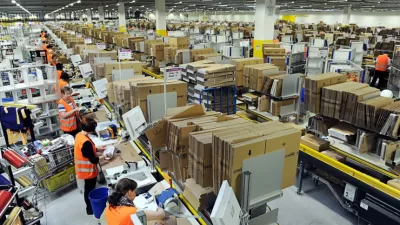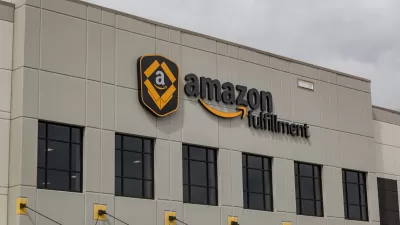Amazon is moving more moving more products than ever, and the company is expanding its physical footprint to keep up with the trends.

"Nine months into a global health crisis, buying online has become the default shopping strategy for many people, especially during the holiday season as COVID-19 runs rampant. In 2019, the company delivered about 2.5 billion packages in the US — roughly 20 for every household — a number analysts expect to jump by 20 percent or more this year," according to an article by Tim Logan and Janelle Nanos.
With businesses booming, Amazon is preparing for a future that maintains this level of widescale reliance on delivery services.
"That’s why it’s betting big on a web of warehouses and delivery centers in major US cities, a shipping network on a scale never before seen. By the end of 2020, industry analysts expect, Amazon will have added roughly 100 million square feet of warehouse space to its portfolio, a 50 percent jump from what it had just one year ago."
The company's real estate expansion is already visible in Eastern Massachusetts, according to the article—both in new sorting centers, shipping hubs, and "last-mile" shipping centers.
The company's expansion is already encountering opposition from potential neighbors, along with resulting setbacks.
FULL STORY: To deliver more goods faster, Amazon is getting closer to your door

Alabama: Trump Terminates Settlements for Black Communities Harmed By Raw Sewage
Trump deemed the landmark civil rights agreement “illegal DEI and environmental justice policy.”

Planetizen Federal Action Tracker
A weekly monitor of how Trump’s orders and actions are impacting planners and planning in America.

Why Should We Subsidize Public Transportation?
Many public transit agencies face financial stress due to rising costs, declining fare revenue, and declining subsidies. Transit advocates must provide a strong business case for increasing public transit funding.

Judge Orders Release of Frozen IRA, IIJA Funding
The decision is a victory for environmental groups who charged that freezing funds for critical infrastructure and disaster response programs caused “real and irreparable harm” to communities.

‘Clybourne Park’ Sets Stage for Housing Equity Discussions
Clybourne Park, a play exploring race, real estate, and community tensions, can set the stage for discussion on the lasting impacts of housing discrimination, gentrification, and the fight for affordability.

Understanding Road Diets
An explainer from Momentum highlights the advantages of reducing vehicle lanes in favor of more bike, transit, and pedestrian infrastructure.
Urban Design for Planners 1: Software Tools
This six-course series explores essential urban design concepts using open source software and equips planners with the tools they need to participate fully in the urban design process.
Planning for Universal Design
Learn the tools for implementing Universal Design in planning regulations.
Caltrans
Smith Gee Studio
Institute for Housing and Urban Development Studies (IHS)
City of Grandview
Harvard GSD Executive Education
Toledo-Lucas County Plan Commissions
Salt Lake City
NYU Wagner Graduate School of Public Service




























